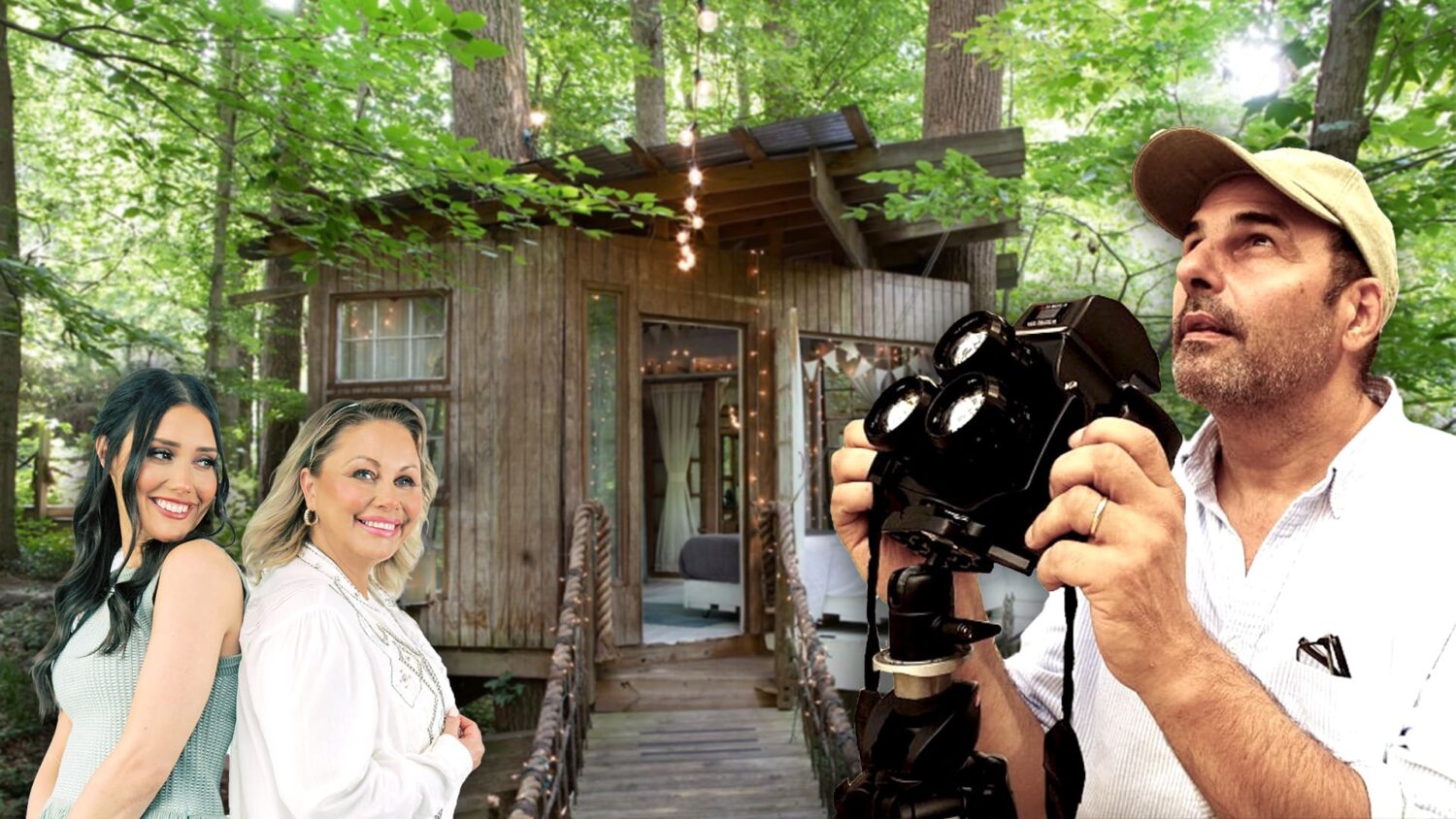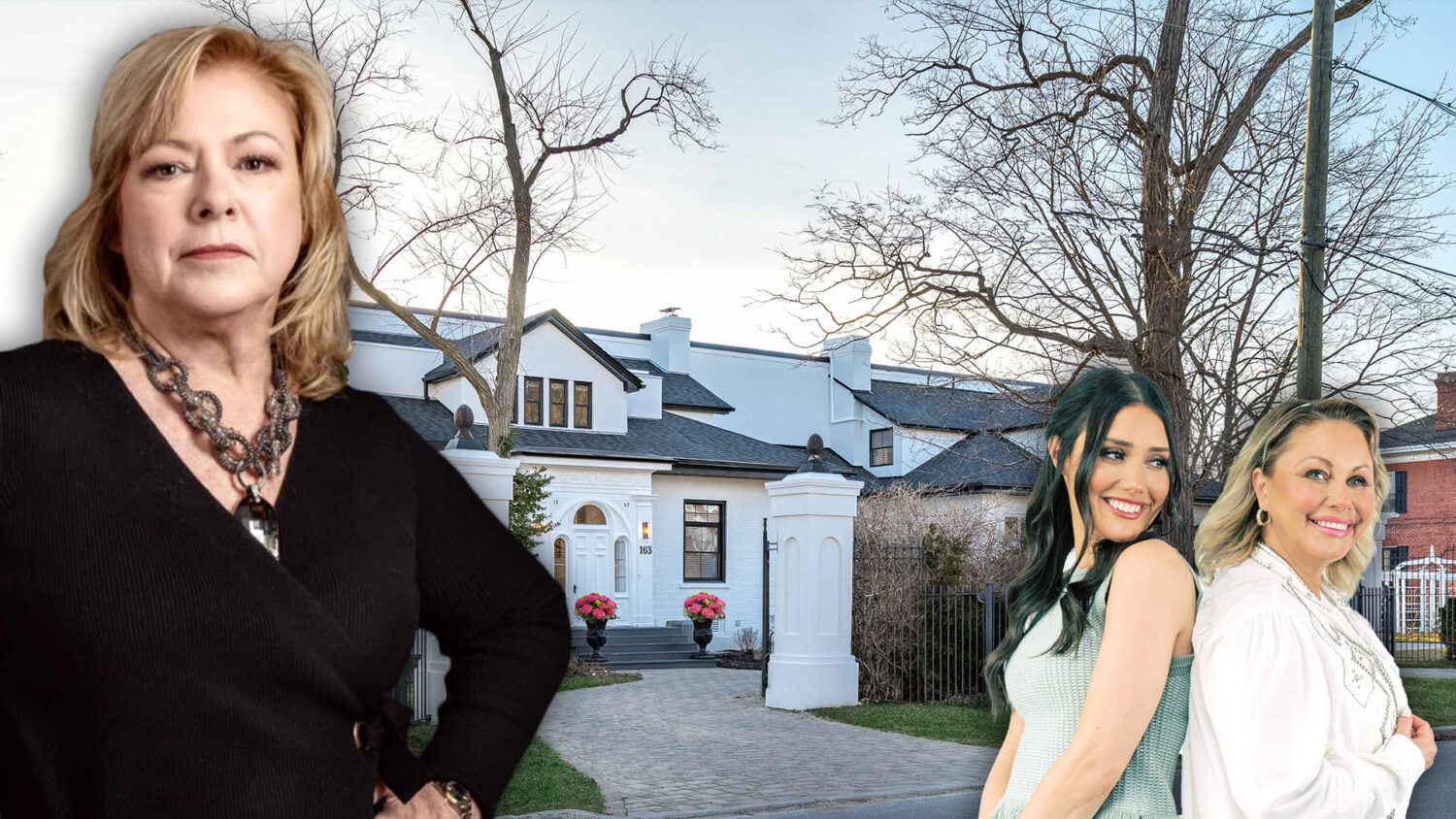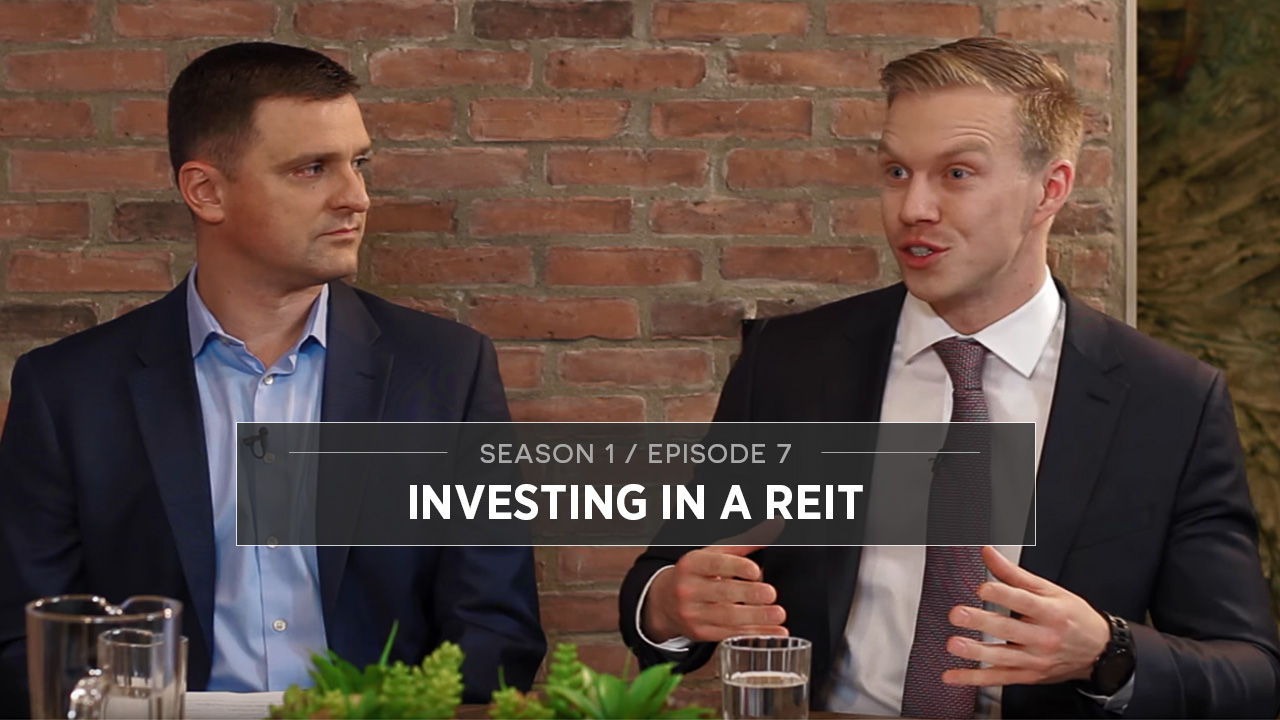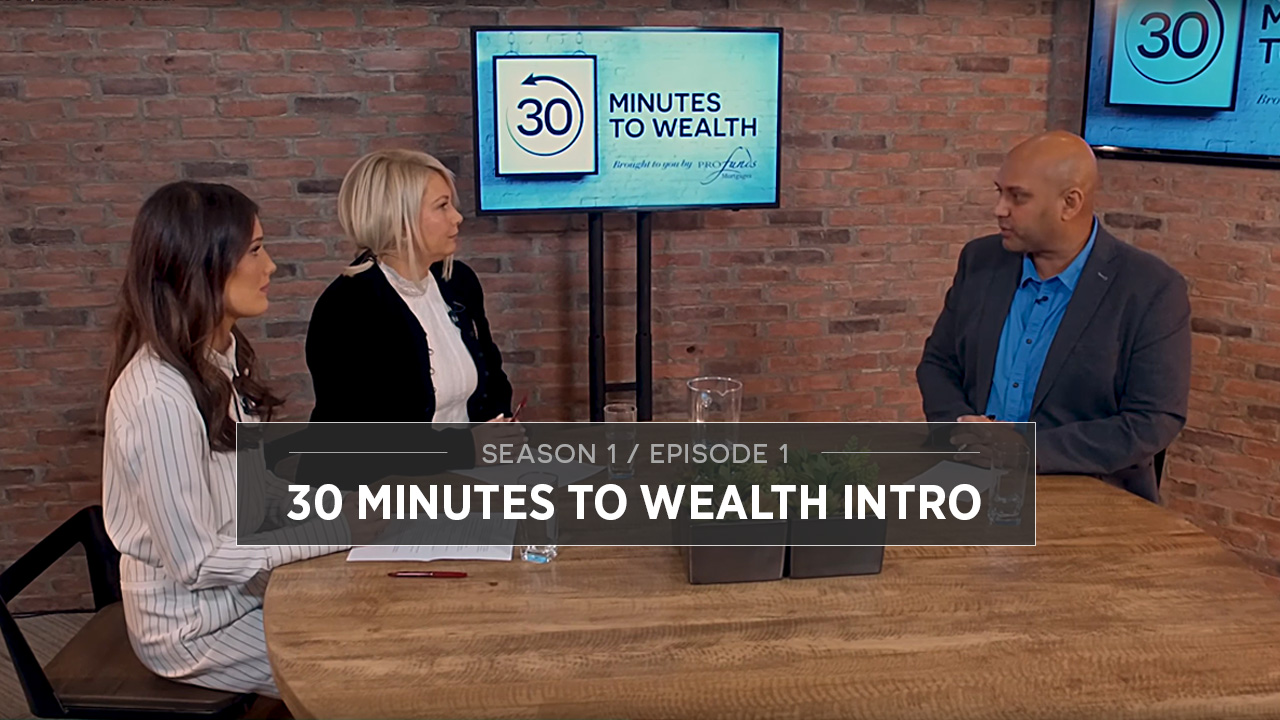In this episode of 30 Minutes to Wealth, hosts Carmen & Jordan Campagnaro meet with District REIT and Luan Ha, Exempt Market Dealer at Fundscraper Capital Inc., to discuss real estate investment trusts (REITs).
To learn more about District REIT:
Web: districtreit.ca
Read the Full Episode Below
Passive Investing in a REIT with District REIT S5 E3
(Note: This transcript has been modified for clarity purposes)
Carmen: Hi. I’m Carmen and this is Jordan. Welcome to 30 minutes to wealth.
Jordan: The show that teaches you how to build wealth through real estate.
Today on the show, we’re going to be talking about investing in a REIT which is a real estate investment trust.
Carmen: Our guests today are here to share all the juicy details of how to get invested in this vehicle, the returns and how to get involved. Don’t go away. We’ll be right back.
BREAK
Jordan: Hi, I’m Jordan, and this is Carmen. Welcome back to 30 Minutes to Wealth. Today, we are talking about investing in a REIT, specifically District REIT, which is a sponsor of the show.
We’re so happy to have Paige and Laun here. Guys, thanks so much for being on the show today.
Luan: Thank you.
Paige: Thank you for having us.
Jordan: Yeah. So, Paige, you’re the manager of investor relations at District REIT. And Laun, you’re an exempt market dealer for District REIT. Tell us a little bit about yourself.
Paige: Yeah, sure. I mean, I’m the main point of contact at District REIT for any investors that come in and want to learn about the product. So they would come into either myself or one of our team members to get connected to learn more about the product. We would then hand them over to Luan, and he will really take them through the entire investment process. And once they’re through and they’re actually invested in the products, they come back over to us and we handle them throughout the entire term of their investment. So from there, you know, we can help with anything from daily inquiries all the way to quarterly reports or annual financial statements to give them information on their investment online.
Luan: Hi, I’m Luan Ha, I’m the President and CEO of Funds Paper Capital. We are an exempt market dealer and we represent District REIT for investors.
Carmen: Awesome. And OK, so what does an E.M.D. do for an investor and why do we have to use an E.M.D.? And that’s a question so many of my clients ask me. Why do we have to go through somebody else?
Luan: Yeah, so an exempt market dealer participates in the private investing space, investing in private real estate is highly, highly regulated. So there are various rules and laws provincially, federally, and investors who are interested in investing in private real estate. They have to go through a variety of procedure including ‘Know Your Client’, which is called KYC. We have to verify the idea of all the investors and also assess the suitability of various investments for that investor. So when they go through the onboarding process, we make it as seamless as possible, as easy as possible. And if an investor has a certain timeframe, a certain risk tolerance or various investment objectives, we try to make sure it lines up and aligns with the underlying investment opportunity.
Carmen: Right.
Luan: So for something like district REIT, which is in the private exempt space, we help the investors, to complete the forms. We help them complete their suitability assessment. We try to make sure, that the underlying investment matches their objectives.
Jordan: So, we’re taking a step back, for those who are maybe a little bit unfamiliar about what even a REIT is, could you guys give us a little bit of an idea Paige,maybe what is REIT and then, you know, what is District and how does this kind of all come together?
Paige: Yeah, absolutely. So a REIT is a real estate investment trust. And really what it allows for is for investors to pool their money together, to invest in a diversified portfolio of various different income-producing properties. So that could be, you know, residential and commercial properties for district REIT. Specifically, we focus on the southern Ontario area for these properties. And, you know, through those acquisitions, they’re actually a partial owner and all of these types of properties can generate both income and growth from being a part of the assets.
Carmen: Right. I know that’s what’s so exciting about a REIT. Because if you don’t want to actually have to go in and work at and deal with tenants and all that stuff that I do because I am very involved in the day-to-day with the operations in our buildings. It’s a lot of work.
Jordan: Exactly.
Camren: And, you know, you have to qualify for mortgages and all of this. So when you’re invested in the REIT, you don’t have to, Right?
Paige: Exactly and that’s really the main piece of feedback, we’re hearing from our investors and why they want to come to us to learn about District REIT is they don’t want the hassle of being a landlord. You know, it’s not always glamorous and they don’t want to have to do the maintenance and the property management and deal with the tenants so they can invest possibly with us. And they don’t have to do that heavy lifting, but can still acquire these properties and benefit.
Luan: Some of the additional benefits of investing in a private real estate investment trust a REIT is basically a flow-through structure and has tax efficiency benefits. And so whenever there’s income earned in the REIT it gets distributed to investors. So the rental income or other sources of income from the underlying
assets and properties it flows through the REIT don’t get taxed at the trust level, then get distributed to investors. And so that’s why it’s a great way for investors to receive a relatively stable income stream. And sometimes it’s a premium return just like with District REIT. I believe DISTRICT REIT is targeting an 8% cash distribution and within a three to five-year time horizon. Expect a return of 11 to 13% so you have some benefits of tax deferral you have some benefits of potential capital appreciation because as the asset values go up then the prices should reflect that
with potential increases in the unit values as well. So by being a passive buster into a diversified portfolio like a REIT, then you have some benefits of owning indirectly
the real estate, but not having to be a full-time landlord.
Jordan: I think that’s a really fantastic avenue for people that do want to get into owning real estate, but maybe they don’t have the time or the resources or even the capital required to start that on their own. So here they can kind of take part. They’re still indirectly owning amazing assets, real estate assets and benefit from that appreciation, but they’re not having to do all that work and all that upfront to kind of leave it to the management team to take care of for them.
So I think that’s a really, really key benefit of these types of passive investments.
Luan: Yeah, you get professional management and with the District manager team, they are vertically integrated company, so they have the ability to acquire financing. They have that specialization, skill, they have property management, in-house leasing, in-house development management, and these are some unique, differentiating factors, for a REIT such as District REIT, because not many REITs, have the full spectrum of vertical integration like District REIT themselves. And so that’s another avenue of adding value for the underlying assets such as District REIT and we view that as a very big plus for REIT holders.
Carmen: Absolutely. Well, having the ability to get financing on these assets, getting the best possible interest rates and terms that we need, and having management in-house is key because that’s the key to all success. And real estate management is number one. And then also having pipeline, like having the ability to buy income producing assets like today in our in our market, in our world, multi-residential income-producing properties that the rich is acquiring is the hottest thing in the industry right now. Like finding those deals is impossible.
Luan: It’s competitive
Carmen: it is so tough and the cap rates are so low. So when you’re purchasing these assets, they’re so expensive and the cash flow is limited, right?
So it’s hard to get into that. So the benefit of having that integration in the companies is huge because you have the first opportunity to acquire and, it’s huge for people.
Luan: So and with the intercompany, you could look at different ways to add value to the underlying assets that other managers may not be able to see in those underlying assets as well. Right. So that’s another huge, huge advantage.
Jordan: Now Luan you also mentioned Private REIT and Paige, you referred to District as being a private REIT as opposed to a public REIT, can you guys talk us through and differentiate a little bit about what those differences are and why that is important for investors to know.
Luan: Yeah, for sure. So most people who invest in private real estate, they don’t like the volatility, of the stock market. And so when you invest into some of the big names in the REIT sector, on the public side, on the stock exchange, you potentially have the subject to the volatility, of the underlying market, the capital markets.
So you almost lose the benefit of stable asset values that you otherwise would get from private real estate. So when you look at the private real estate investment side, they are not listed on a stock exchange. So yes, there isn’t as much liquidity on a day-to-day basis, but you don’t have the potential volatility that’s driven by the capital markets or the stock exchange. That’s one of the major benefits of a private versus public REIT that investors should consider. Also, when you look at public REITS or private REITS a lot of times, large institutional asset managers, they’re investing into public reach potentially. And if they choose one day, to liquidate their holdings because the market turned and they have a different perspective on the entire market, then you as an investor, they call it investor contagion. And so even though your strategy was a long-term hold, another investor strategy might have been a short-term hold. And then there’s potential volatility there.
Paige: Yeah, exactly.
Luan: Whereas on the private side, it’s restricted in terms of transfers and sales. And so the asset values and the unit prices are reflective of that where it’s more stable and so the technical term is it’s less correlated with the stock market.
So you preserve that benefit of owning the underlying real estate assets from a more passive point of view. So that’s probably the biggest distinction between public and private REITs,
Carmen: Right? Absolutely. Do you find that investors like the fact that it’s a private REIT, do they know the differences when you speak to them?
Luan: Yeah, with private REITS, investors are able to understand what the pipeline is. It could see the assets in there as well. Sometimes if you invest into a large public REIT, you may not even know what’s in the portfolio of assets. And so having a more of a closer connection with the underlying properties in a private REIT is one of the benefits that we hear from the masses as well. And to from a return point of view, a lot of times the public REITs because of the large ticket investors and the essential asset managers, they drive, they can drive up the unit price and then it drives down and compresses the yields. On the private side, it’s not widely circulated. And so the ability to maintain stable distributions and a premium return, you sometimes see higher distribution yields on the private side versus the public side.
Carmen: Absolutely. Well, I think we have to go to break. So we don’t have too much time and we have so much to talk about. We could probably sit here for about three or four hours to go through everything but we’re going to be getting further into the returns and the tax advantages and how to qualify and the qualification criteria so hold our thoughts here and don’t go away. We’ll be right back.
BREAK
Jordan: Hi, I am Jordan and this is Carmen. Welcome back to 30 Minutes to Wealth.
Today, we’re on the set with Paige and Laun, and we’re talking about investing in a REIT. So to kind of pick back up, we were just digging into a little bit the difference between private and public REITs, and kind of just one more question I wanted to ask was, is when we’re looking at private REITs, how are the valuations in unit prices derived there? Because we saw on the public side, it’s a lot more based on the market. So can you guys talk to us a little bit more on the private side?
Paige: Yeah, absolutely. I mean, I think that one of the main reasons why people come to us is because they don’t like all of that volatility that you can see in the stock market at the uncertainty. So when you look at the value of our assets, they’re really evaluated by a couple of different factors. One of them could just be simply market conditions going up. But also we put money into these properties to renovate them and add value through those avenues or from rental prices increasing. So there is a couple of different things that can contribute to the unit price increasing so that investors really get to take advantage of the growth side of this investment.
Carmen: Well, at the end of the day, it’s value. So commercial real estate, multi-rise is all about your income. So the more you increase the revenue and decrease expenses and be super efficient is where you have a very good bottom line, which is your net operating income, that there is creating value and with the demands. That’s how values increase and that’s how a REIT is successful.
Luan: Yeah, and that’s a key on that point about and why it’s important to note that when a unit or a REIT determines their unit prices, they get third-party appraisals to evaluate the NY on all the underlying assets. These appraisals are qualified. They’re certified with a governing body and then they put together a very detailed report and they look at the market conditions, they look at the leases, they look at the cash flows from these assets, and then they do their own copies for NOI.
Carmen: Right.
Luan: Then they take a cap rate to the body, and then it shows you the value for the properties. From there, they take the aggregate that they deduct any debts or liabilities of the REIT and then the remaining amount is the equity that’s divided by the number of outstanding units. And that is how they derive basically the unit value. So it is the important thing to note is third-party appraisals. It happens, I believe, once every year for a private REIT. That’s right. And that’s according to certain accounting standards. And it’s based off of valuations and reports that also include what’s happening around the surrounding market.
Carmen: Right, exactly.
Jordan: And so district REIT is a diversified REIT, can you guys talk to us about what this means and how this is beneficial for investors?
Paige: Yeah, absolutely. I mean, it’s diversified in a couple of different ways. One of them being the location and another one being the asset type. So in regards to the location for district REIT specifically, we really focus on those secondary and tertiary markets. You know, we’re not the downtown Toronto investors in the sense, but because we find so much value in those outskirt markets.
Carmen: Yes.
Paige: And I mean, you know, especially in the last two years, we’ve seen it more than ever how important these other markets are because people are leaving those areas and they’re going out and
Carmen: they want to be in smaller communities.
Paige: Exactly. Yeah, they want to be in smaller communities. And not only are these places becoming more attractive because of the prices of everything right now and it being so hard to buy, but also people like that, you know, small-town feel and being away from the city. So we’re finding a lot of value there. And it’s been incredibly successful for us. And what it’s meant, especially over the last few years, is that we’ve been able to maintain extremely high occupancy rates because people are going to these markets.
Carmen: Yes.
Paige: So we have a lot of diversification in that sense to be in those outside markets and in addition, we can have all different types of assets. So it could be commercial, it could be residential. You know, we have the ability to expand into industrial oil or wherever we find value, right?
Camren: Absolutely
Paige: So depending on the markets, depending on the best acquisition we can make, we have the flexibility, which also means the investors get to participate, in a whole lot of different types of properties that they wouldn’t be able to do on their own. Right.
Carmen: And some REITS, even if they are private, they actually just have one asset class in there. Exactly where this one here is diversified.
Paige: Yeah. It’s very specific to the district property trust. A lot of it, as you said, are very specialized in the sense and we can offer a wide range, which is pretty exciting.
Jordan: And Carmen, I mean, you’re the co-founder and trustee of District REIT Yeah. I know that having something that was diversified and positioned in these types of markets was something that was very important to you and kind of your vision for where you always wanted to go.
Carmen: Absolutely. Absolutely. Yeah. Well, with us having being in the industry for so many years and having access to management and development and finance, it was just perfect. And we knew our investors wanted to participate in real estate and how could we help them succeed and participate with us in this. And this was the perfect solution.
Luan: So whenever investors are valuing a private REIT and building their real estate portfolio, obviously returns is one of the biggest key factors.
Carmen and Jordan: Yes.
Luan: And so when you look at the returns, look at the track record. If we look at digital REIT, they’ve had a very stable cash distribution yield of about 8% since inception. And so it’s payable monthly. So by the end of the year, let’s say you invested thousand dollars, projected cash distribution of about $8,000, divide that by 12, and that would be expected monthly distribution. Of course, historical performance doesn’t always indicate future performance, but it certainly helps you evaluate what could be expected going forward.
Jordan: Right.
Luan: So it has an overall return target of 11 to 13% that’s based upon a medium to long-term hold of anywhere from three to five years. The 8% of that 11 to 13% is the cash description that you’ll be receiving expected on an annual.
Jordan: So by cash distribution, you just mean every month that investor has that cash flow coming into a bank account, whether that’s they invested cash or I believe registered funds are eligible as well.
Luan: Yeah, that’s right. That’s the dividend income. The distribution that they expect to receive on a cash basis derives from the underlying income from the assets. So whether it be rental income or the interest rate gets funneled right and gets paid back to the investors.
Carmen: Now the really juicy part is the tax deferral. Can you talk about that?
Luan: Yeah, sure. So one of the biggest benefits of investing in a private REIT is their tax deferral and it’s a very tax-efficient investment because, unlike a corporation, it doesn’t get taxed at the trust level. So any income that’s generated by the trust or the REIT on behalf of the unit holders will flow back to investors not taxed when the investors receive the distributions. Some REITs will classify that distribution as a return of capital and return capital is not taxable.
Carmen: Right.
Luan: So District REIT as a private real estate investment trusts. So far, -a significant portion of the distributions have been classified as return on capital. So you only get tax when you sell or redeem your units. And if you sell or redeem in three years or years of five years, depending on what your cash needs are then that’s effectively when you’d be getting taxed.
Jordan: This is so exciting. I mean, what a fantastic structure. So if I wanted to invest, what does the process look like in getting started and what’s the minimum investment and what are there any specific qualification criteria that investors need to be made aware of?
Luan: Yeah, sure, because it’s highly regulated. And so one, they have to be onboarded. They have to complete a variety of streamlined online forms. Once we qualify to participate, that is depending on what kind of embassies are, there might be some limits on an annual basis, but we would walk each client and investor through that process, make them comfortable and make them aware of the offering we make them understand what they’re investing in including the risk and the potential rewards. And also we try to make it as easy as possible. We’re always available for in-person meetings, phone calls.
Carmen: And now the thing is, you’re online. You’ve got a great platform.
Luan: Yes.
Carmen: And that’s what intrigued us so much was your company online.
It’s amazing what you’ve done and everything. It’s online, so you can actually apply online. You don’t have to wait for somebody. You can actually fill it in. And right away
Luan: We’re available, 24X7.
Jordan: We love it.
Luan: In the comfort of your own home and you don’t have to step out. You could do it in your own pajamas. So you take your time to value materials. We make available all the materials. So with an offer like district REIT, you have to review what’s called the offering memorandum. It’s a very long, detailed document.
Paige: Yep!
Luan: It summarizes the REIT, it provides you with all the risk factors, it outlines the terms of the investment. So that’s a very important document that all investors should and have to review. And then they would have to sign and review a subscription agreement for their investment.
Jordan: Right.
Luan: It’s also eligible for registered funds. And so if you were planning to, if an investor were planning to subscribe and invest with their TFSA or an RESP or RAF account, or any other type of registered plan account, we would also help facilitate that process. Well, sometimes it could be very confusing or type two purposes, but we make it as easy as possible.
Carmen: Yeah, that’s great.
Jordan: Now, is there a minimum investment like, if I wanted to participate, how much would I need to look at to be able to know if this is even a fit for me?
Luan: Yeah, the minimum subscription amount initially is $10,000 per investment. Any subsequent orders or investments. The minimum is $5,000.
Jordan: Oh, OK. It makes it quite easy for investors to, you know, if they want to get into real estate, but maybe they don’t have the down payment and you know, 100,000, 200,000, 300,000 sitting in their account. This is still a fantastic way for them to get started, get that ball rolling, whether it’s funds they have in their TFSA or savings that they’ve set aside, and start to start building their real estate nest egg.
Carmen: Absolutely.
Paige: Exactly. It’s pretty cool that with only a $10,000 investment, you get exposure to all of these properties and you are truly a partial owner of all of them. Right. And it’s becoming harder and harder to buy these properties on your own. And I mean, we’re talking multimillion-dollar properties in the REIT, right?
So obviously that’s a tall task for a single person to do. So to be able to pull together with you know, like-minded investors who want to do the same thing.
It’s a great option.
Luan: I know we always recommend to clients who are looking to diversify their overall investment portfolio, to always consider private REITS because by providing
that additional diversification that you otherwise wouldn’t get, if you’re only investing in a stock, risk is a very important topic for investors to consider. Of course, when they see a higher return, they always like to say higher risk, high return. And so those things are kind of in tandem. And so when you look at a private REIT offering, you have to take a look at the loan-to-value ratios on the underlying assets. You want to make sure that the REIT isn’t over-levered. I want to believe that District REIT on a proper level is about on average 57% loan to value. So there’s a lot of equity value built up in these underlying assets.
Jordan: Right.
Luan: And so from a call it, indebtedness point of view, that seems very that seems like a pretty conservative low ratio. Also, you want to look at the stability of the income stream and the NOI that you mentioned the net operating income that’s usually driven by what’s the quality of the leases and the tenants in these underlying assets. So that’s another major risk factor because obviously your occupancy rate and tenancies drive your rental income. So another risk factor to pay attention to is what’s the ability and what kind of tenants are you attracting.
And I believe with District REIT, most of the square footage currently today is in the residential rental. And in this market, people who are renting, it’s quite a stable
income stream because if you look at even the Ontario entire province of Ontario, the current vacancy rate is sub 3%.
Carmen: So yeah, sub to sub 2%.
Luan: And that’s a very healthy competitive market. I think Canada last year brought in 400,000 immigrants. So population increase demand for housing.
And so another major risk factor is what about the underlying and surrounding markets, what’s happening around these areas? Is there continuous infrastructure investment? Are there other investments in terms of other assets being built around these areas? And so that’s where you have to rely on the trustees and the management team and the experience of the team at the REIT. Because if they acquire an asset in the wrong area or they can’t manage it properly because they don’t have that experience in the asset class, then that’s certainly a major risk.
Carmen: OK, exactly.
Jordan: Before we wrap up today, Paige is there any last things
that you could provide to us, the feedback you’re getting from investors and.
what they’re saying.
Paige: Yeah, I mean, absolutely. It’s you know, to reiterate some of the great things that we already talked about, it’s just so accessible for people right now to invest in this type of product. You know, they have the ability to come in and invest sometimes within like a five-day window. It can happen that quickly because the process, as Laun said, it’s very streamlined. So, you know, our team,
we work closely with AMD to make sure that they can bring our investors through very quickly. And then from there, we’ll take care of the rest. And they just get to take advantage of, you know, seeing that monthly distribution come out to them, whether that’s through income or growth avenues. And they just like the accessibility that it brings to a diversified portfolio,being able to be a part of this and of course, one of the big things, is having the expertise from, you know, Carmen and Richard to really bring in here all of their knowledge on the areas and the properties. And, like you said, the financing, the construction, property management.
Paige: So all of those together -!make for an exciting investment for the investors.
Carmen: Exactly. Amazing.
Jordan: Well, thank you guys so much for being here today. This was amazing and had so much value. I think everyone is going to love this and be so interested to learn a little bit more about this So thank you again for joining us.
Luan: I think we’re here to always help with the investors and we always recommend investors seeking professional, independent advice talks and or financial advice. Always good to do that as a potential investor. And Paige and I are always around to help investors go through the process.
Paige: Absolutely. Thanks guys.
Luan: Thanks for having us.
Jordan: If you’re interested in learning more about District REIT, you can go to DistrictREITca. And for more information on real estate investing, be sure to go to 30 minutes to wealth to check out the rest of our episodes.
Carmen: Thanks for watching and go create wealth.






















